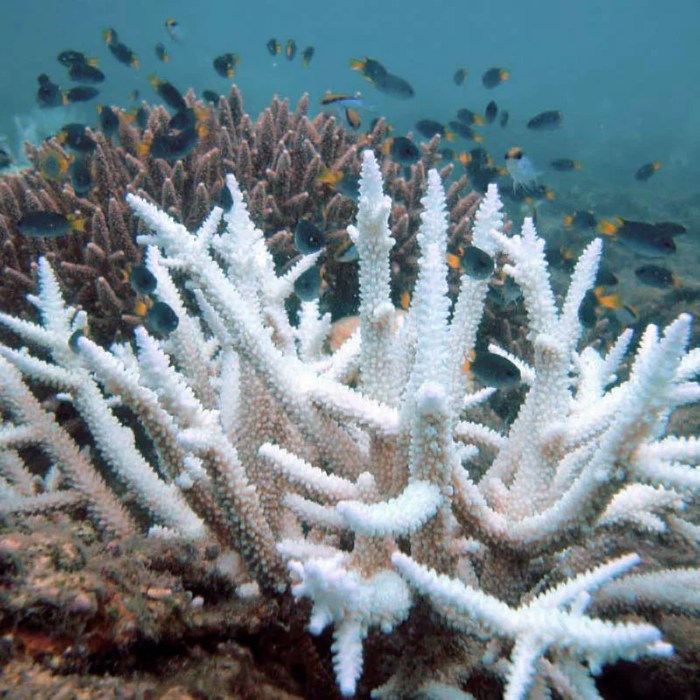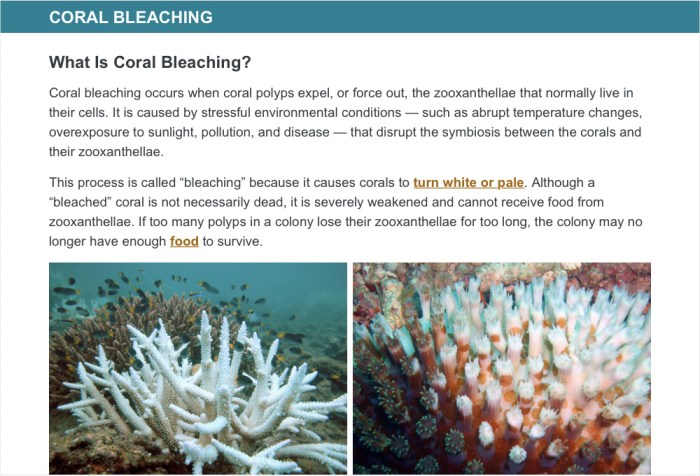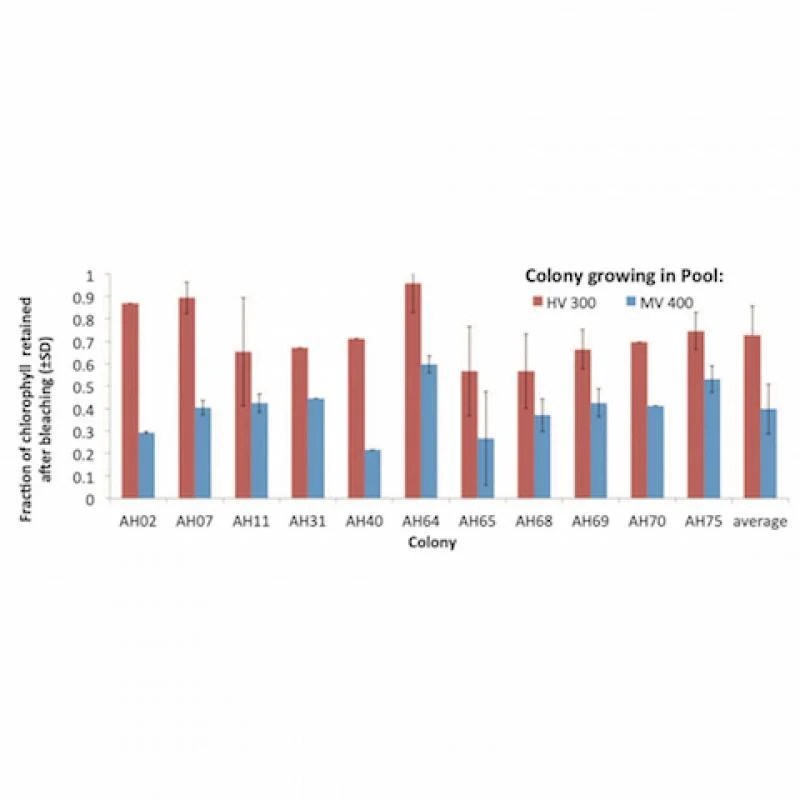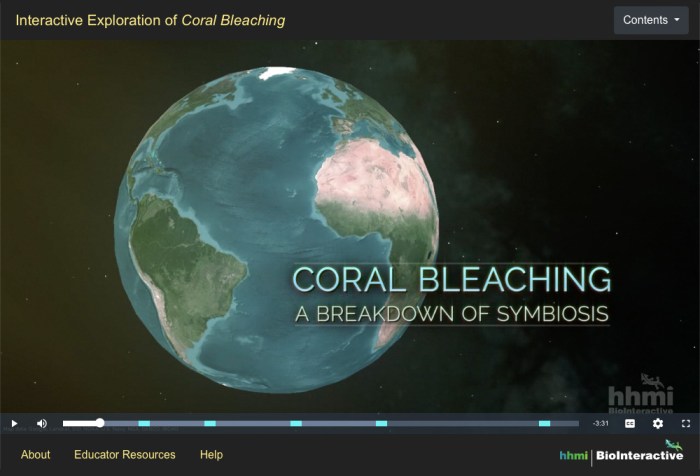Embark on an interactive journey with the interactive exploration of coral bleaching answer key, an immersive gateway to unravel the complexities of this critical environmental issue. Delve into the vibrant world of coral reefs, their ecological significance, and the devastating consequences of coral bleaching.
Witness the transformative power of interactive exploration as we unlock the secrets of this marine crisis.
Through a captivating blend of virtual reality, augmented reality, data visualization, and citizen science, this interactive exploration empowers you to explore coral bleaching firsthand. Dive into the depths of scientific inquiry, engage with cutting-edge technologies, and contribute to the collective understanding of this pressing environmental challenge.
Interactive Exploration of Coral Bleaching

Coral bleaching is a phenomenon where corals lose their symbiotic algae, causing them to turn white and become more susceptible to disease and death. This process is primarily driven by rising ocean temperatures due to climate change. Coral reefs are vital ecosystems that provide habitat for a diverse range of marine life, protect coastlines from erosion, and support local economies through tourism and fishing.
Interactive exploration methods, such as virtual reality (VR) and augmented reality (AR), offer immersive and engaging ways to study and communicate the impacts of coral bleaching. These technologies allow researchers and educators to create realistic simulations of coral reef environments, enabling users to explore and interact with virtual corals in a way that is not possible in the real world.
Methods for Interactive Exploration, Interactive exploration of coral bleaching answer key
Virtual Reality (VR): VR headsets immerse users in a computer-generated environment, allowing them to explore coral reefs from a first-person perspective. This provides a realistic and immersive experience, enabling users to observe coral bleaching and its effects on the surrounding ecosystem.
Augmented Reality (AR): AR overlays digital information onto the real world, allowing users to interact with virtual corals in their own environment. This can be used to create educational experiences that teach users about coral bleaching and its consequences, or to provide researchers with a way to monitor coral reefs remotely.
Data Visualization and Simulations: Data visualization tools can be used to create interactive maps and charts that show the distribution and severity of coral bleaching events. Simulations can model the effects of different environmental factors on coral bleaching, helping researchers predict future bleaching events and develop strategies to mitigate their impacts.
Citizen Science and Crowdsourcing: Citizen science projects engage the public in collecting data on coral bleaching. This can involve monitoring coral reefs for signs of bleaching, or using underwater cameras to capture images that can be analyzed by scientists.
FAQ Section: Interactive Exploration Of Coral Bleaching Answer Key
What is coral bleaching?
Coral bleaching occurs when corals expel the symbiotic algae that provide them with nutrients and color, causing them to turn white. This stress response is often triggered by environmental stressors such as elevated water temperatures or pollution.
Why are coral reefs important?
Coral reefs are among the most biodiverse ecosystems on Earth, providing habitat and food for a wide range of marine life. They also protect coastlines from erosion and storm damage, and support local economies through tourism and fisheries.
How can interactive exploration help us understand coral bleaching?
Interactive exploration allows scientists and the public to visualize and interact with complex data on coral bleaching. This can help us identify patterns, test hypotheses, and develop strategies to mitigate the impacts of this environmental crisis.


